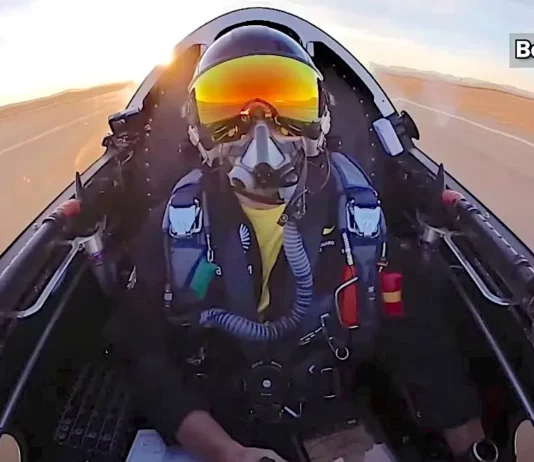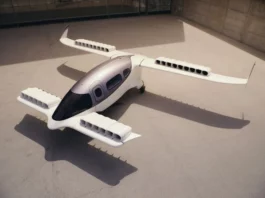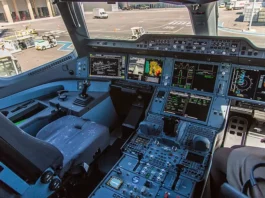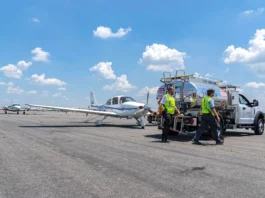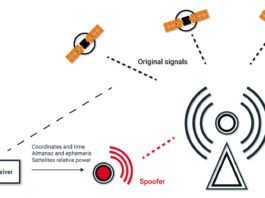Briefing: September 2017
Icon started to deliver airplanes to customers in June, and let them take them home and fly them wherever they want, the company said in its annual newsletter. The first deliveries went to owners in Seattle, Montana and California. To support these A5s, Icon said it trained authorized maintainers at their home airports. We are continuing to grow the third-party partner network to service upcoming deliveries that arent near factory service centers, currently in Vacaville and Tampa, Icon said. The company also said it has trained more than 125 pilots at its two Icon Flight Centers, and added that it hopes to deliver 15 more aircraft by the end of this year and ramp up to 200 deliveries in 2018.
Briefing: August 2017
The Paris Air Show opened in June with the usual displays of military hardware and the latest passenger jets, but new and emerging technologies also attracted a lot of attention. Volocopter, a German company that has been developing a two-seat electric VTOL, announced it will work with the government of Dubai to test fly semi-autonomous air taxis by the end of this year. Boom unveiled the final design for a subscale prototype of its supersonic airliner, and said it will fly next year, with three GE engines. Airbus said its working on a new helicopter with a box-wing design that will cruise at 215 knots while maximizing efficiency. The Racer demonstrator will fly in 2020, Airbus said.
Briefing: July 2017
The FAAs BasicMed rule took effect on May 1, creating a new option for pilots who want to fly without an FAA medical certificate. Under the BasicMed rule, pilots can fly under certain circumstances without a medical certificate, but they must pass an online course about aviation medical issues, complete a medical exam and checklist, and meet certain other criteria. The FAAs Advisory Circular (AC 68-1) on Alternative Medical Qualifications describes in detail how pilots can comply with the new policy.
Briefing: June 2017
Mooney Aircrafts updates of its two classic single-engine models now are FAA-certified, the company announced in April. The M20U Ovation Ultra and the twin-turbocharged M20V Acclaim Ultra both come with an all-new interior and a Garmin G1000 NXi panel. The once all-metal airplane now has a composite-wrapped cabin, which the company says produces a quieter ride. The original Mooneys had a single door, but the new versions come with two wide doors for easier access to the cabin. The company has started to take orders for the first batch of 50 airplanes planned for this years production.
Briefing: May 2017
President Donald Trumps first budget proposal, released in March, aims to privatize air traffic control. General-aviation advocacy groups were quick to rally against the effort, although AOPA said it was open to discussion as long as user fees were off the table. The airline industry has been lobbying since Trumps election for the formation of a nonprofit corporation to run the national airspace system, with a board of directors dominated by airline representatives. Proponents say the change would create a more stable funding mechanism for ATC than todays budget-driven method, but GA opponents say the change would amount to handing the nations airspace over to the airlines.
Briefing: April 2017
The general-aviation airport in Santa Monica, California, which has been in place since the 1920s, has long been in contention, as the surrounding area has become densely populated at the same time as the airports importance as a GA hub has intensified. In January, the FAA said it had agreed to end decades of legal wrangling over the airport and close it in 2028, citing safety and environmental concerns. The airport has about 270 resident aircraft and 450 landings and takeoffs a day. NBAA, AOPA, and EAA said they may challenge the agreement. The city plans to turn the 227 acres into a park.
Briefing: March 2017
After years of lobbying by general-aviation advocates, the FAA issued new rules in January that aim to make it easier for many pilots to maintain their medical certification. SpaceX successfully launched a rocket in January that deployed 10 IridiumNext satellites, the first of 66 that will expand real-time global coverage for tracking airplanes in flight by mid-2018. The avionics industry will rise to the challenge of equipping the U.S. aircraft fleet with ADS-B Out by the Jan. 1, 2020, deadline, according to industry leader Ric Peri. The NTSB issued a rare urgent safety recommendation in January, warning pilots that Piper PA-31T-series aircraft may have unsafe wiring that could lead to arcing and fires.
IFR Briefing: February 2017
With flashing lights, smoke, and fanfare, Cirrus Aircraft rolled out their first Vision Jet for customer delivery, in late December. The FAA in December finalized new aircraft certification rules for general aviation that are expected to help the industry bring new designs and technology to market more quickly and cheaply. A chartered RJ85 crashed in Cerro Gordo, Colombia, while flying a holding pattern near its destination airport, on November 28. It might have made sense to the company, but nonetheless many aviators found it shocking to see Cessna dispose of its unsold Skycatcher stock, crushing the brand-new airplanes complete with their zero-time Continental engines.
IFR Briefing: January 2017
After completing its investigation of two fatal midair crashes last year in which seven people died, the NTSB in November issued a Safety Alert urging general-aviation pilots to make use of cockpit technologies that can help them see and avoid other aircraft. The inaugural Sport Aviation Showcase kicked off in Deland, Florida, in November, providing a new venue for fans of light sport aircraft. Boom Technology of Denver, Colorado, unveiled its XB-1 one-third-scale supersonic demonstrator in November. NBAAs annual Business Aviation Convention and Exhibition was held in Orlando, Florida in October, and led with big news from Cirrus that they have achieved FAA certification for their single-engine jet.
IFR Briefing: December 2016
The FAAs long-awaited ADS-B rebate program launched on September 19, and drew more than 1300 applicants in the first two days, according to David Gray, the FAAs ADS-B program manager. A robotic co-pilot that can be quickly installed in a variety of aircraft has been successfully tested in a Diamond DA-42 and a Cessna Caravan by the Defense Advanced Research Projects Agency. Textron Aviation flew its prototype Citation Longitude for the first time, in October. The super-midsize Longitude was announced in 2012. The crew of a Hawker 700A jet that crashed in Akron, Ohio, a year ago showed a disregard for safety, NTSB Chairman Christopher Hart said in October, and the company they worked for, Execuflight, also fell short of their obligations."
IFR Briefing: November 2016
Air traffic controllers need better training to effectively assist aircraft in distress, the NTSB said in a safety-recommendation report released in September. In September, the FAA began offering a $500 rebate to aircraft owners who upgrade to ADS-B-capable avionics. New FAA rules that became effective in August make it easier for operators to secure a commercial drone certificate, and its expected their numbers will quickly outpace manned-aircraft pilots. NTSB staffers who investigated the ditching of USAir 1549 in the Hudson River in 2009 say the Hollywood movie about the event, Sully, portrays them in an inaccurate and unfair light.
EAA AirVenture, Replacing Aftermarket ECI Cylinders, General Aviation Accidents Decreasing
The FAA issued its final rule in August on a controversial airworthiness directive requiring the replacement of aftermarket ECI cylinders in 6200 Continental aircraft engines. It took 13 years from start to finish, but in July the SolarImpulse team succeeded in its quest to fly a solar-powered aircraft around the world. It may not be the worlds sleekest or most beautiful aircraft, but the Airlander 10 is unique, and in July it left its hangar and flew for the first time. The number of general aviation accidents decreased in 2015 compared to the year before, continuing a recent trend, according to the 25th Joseph T. Nall Report by AOPAs Air Safety Institute.

